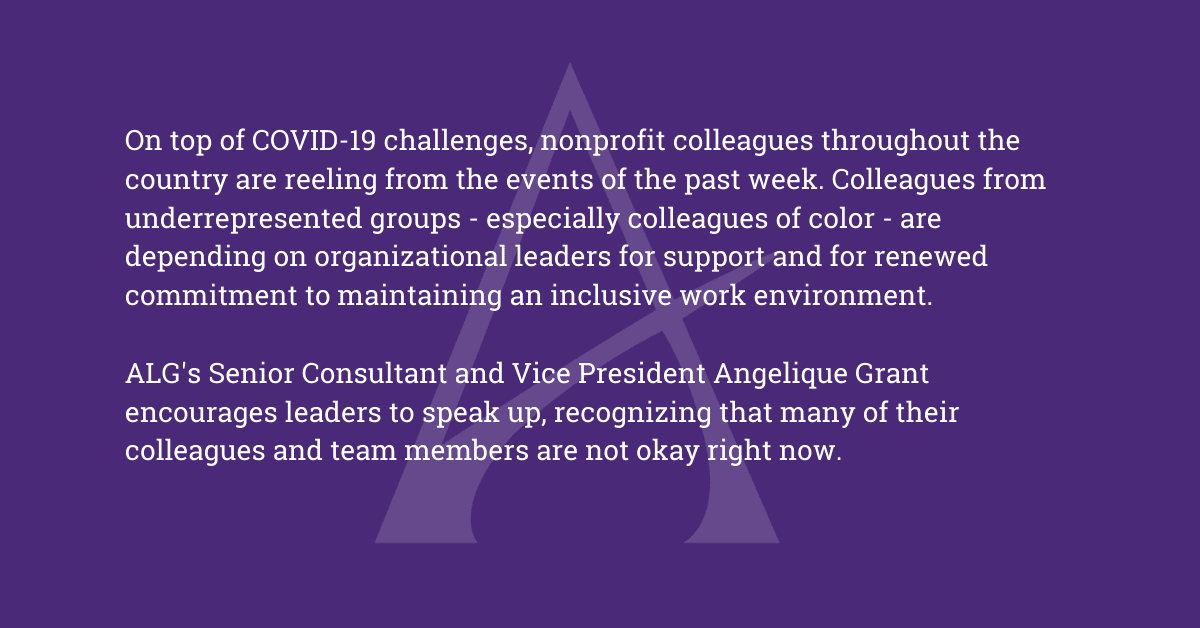This is a highly charged moment in the United States and emotions are running high. Last week the nation experienced a series of incidents that have left people stunned, shocked, and disgusted, faced with undeniable evidence of human beings being delegitimized and devalued.
On top of the stress and anxiety of “stay at home” orders and threats to health due to COVID-19, colleagues from underrepresented groups, and especially colleagues of color, are also doing everything that they can to show up professionally in the face of severe racial tension. Each nonprofit professional sees and experiences the world through a different personal and professional lens, yet all must co-exist in order to advance organizational missions.
If you are a leader in an organization committed to diversity, equity and inclusion, now is not the time to remain silent. Now is the time to show your colleagues of color that you value them and support them, and that you are committed to playing a leadership role in your organization’s anti-racist work. Below are a few tips:
- Say something: Leaders set the tone for the organization. Verbally sharing your sentiments about how you are feeling as a team leader is powerful. Wherever your comfort level is, start from there. Also note that not saying anything is an action – your silence speaks volumes.
- Talk about it: Whether led by your inclusion council or DE&I Committee, your leadership team, or by a variety of people throughout your team, assume people are ready to talk and take peaceful action. Make space for your team to have a dialogue. Revisit the organization’s DE&I objectives and develop measurable goals that demonstrate your commitment to maintaining an inclusive environment and place of belonging.
- Provide anti-bias resources for the team: There are many anti-racism resources available. Encourage your team to explore books, videos, podcasts, and even anti-racist resources for parents. “Anti-racism resources,” a document compiled by Sarah Sophie Flicker and Alyssa Klein in May 2020, offers a robust sampling of materials to explore. Schedule a series of lunch-and-learns: read an article or play a podcast, and have a follow-up discussion as a team. Also create a Slack channel or other file-sharing portal so that colleagues can share resources as well. Encourage all team members to take personal responsibility for their education and not rely entirely on colleagues of color to educate them or start/continue the conversation.
- Review your anti-discrimination policies: If you do not have one, create one. Your policies are only strong when everyone is abiding by them; remind everyone that they exist and reinforce them.
Do not be afraid to be vulnerable and share. You may ask, “What good will it do to say something?” My answer is, “What good does it do to remain silent?” Diversity is not just about black and brown; however, at this very moment it is – and your black and brown colleagues are not okay.


